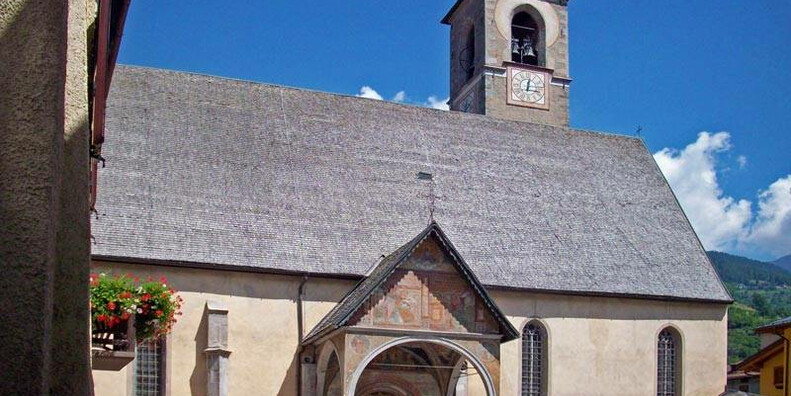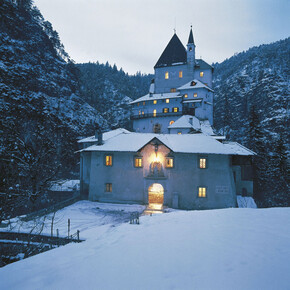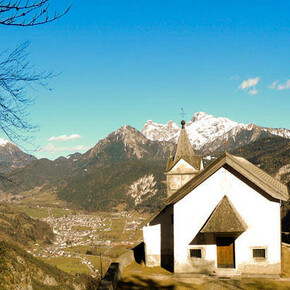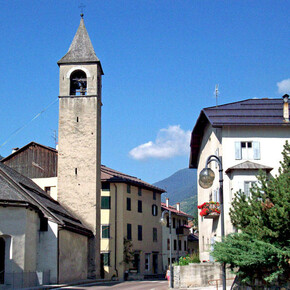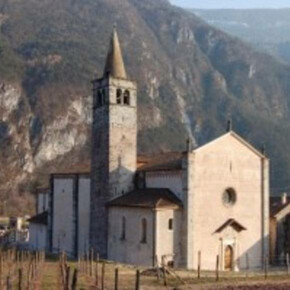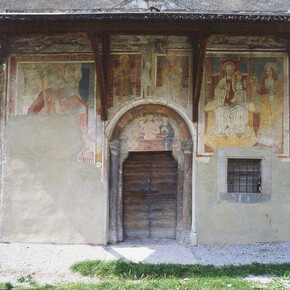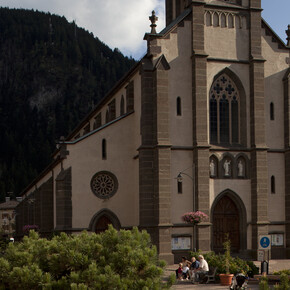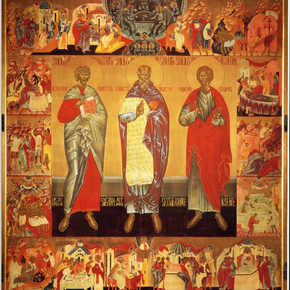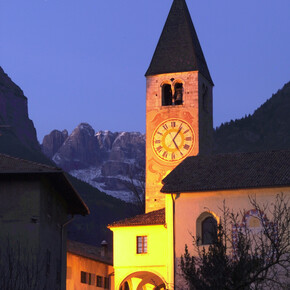Chiesa di S. Maria
Gothic, Romanesque and Renaissance features come together in the Church of Santa Maria di Pellizzano.
Lombard builders carried out an intervention on the structure of the Church of Santa Maria di Pellizzano during the first half of the 16th century, endowing the building with its current architectural look - a combination of Gothic and Renaissance features. Its Romanesque-Gothic portal with a splayed frame and multiple concentric rings is particularly striking. The church features steeply pitched roof and a façade boasting four late Gothic buttresses, as well as a fifth buttress annexed on the piazza side. Two pointed windows open up towards the cemetery. This sanctuary is dedicated to the Virgin and is a popular place of periodic pilgrimage from the River Noce valleys. The Nativity of the Virgin Mary is commemorated every year at the beginning of September, when the town is decorated for the celebration and a procession is held through the streets with the statue of the Madonna delle Grazie.
Two members of the Baschenis family - Giovanni and Battista - worked in the Church of Santa Maria at the end of 15th century and more precisely, in 1470. The oldest frescoes decorating its walls were actually painted by them. Special mention also goes to the work of Simone Baschenis, who painted the entire surface of the outer vestibule in 1533. Up until the works carried out after the fire of 1841, the right wall of the church used to feature a large fresco depicting the legendary passage of Charlemagne. The same wall also features two long arched and barred windows with a single opening and polychrome glass. The five wooden altars - most of which are elegantly carved and gilded - are of especially interesting, as are their prized altarpieces. A Baroque chapel with stuccos and three altars opens up on the left wall and is accessible from a wooden balustrade - a mature work by Simone Lenner (1626).

